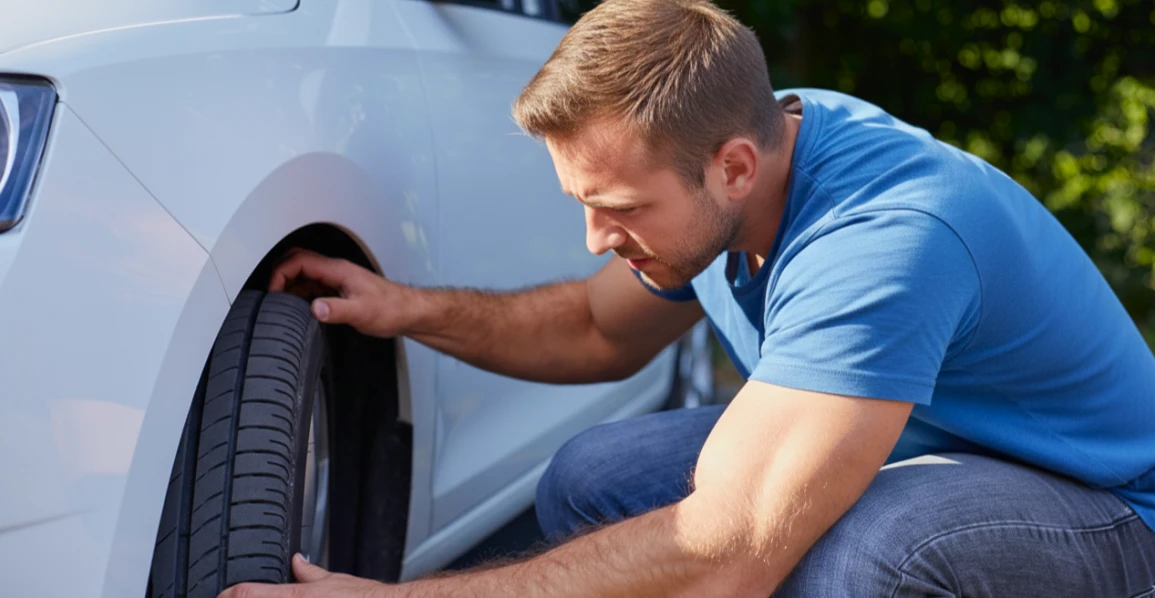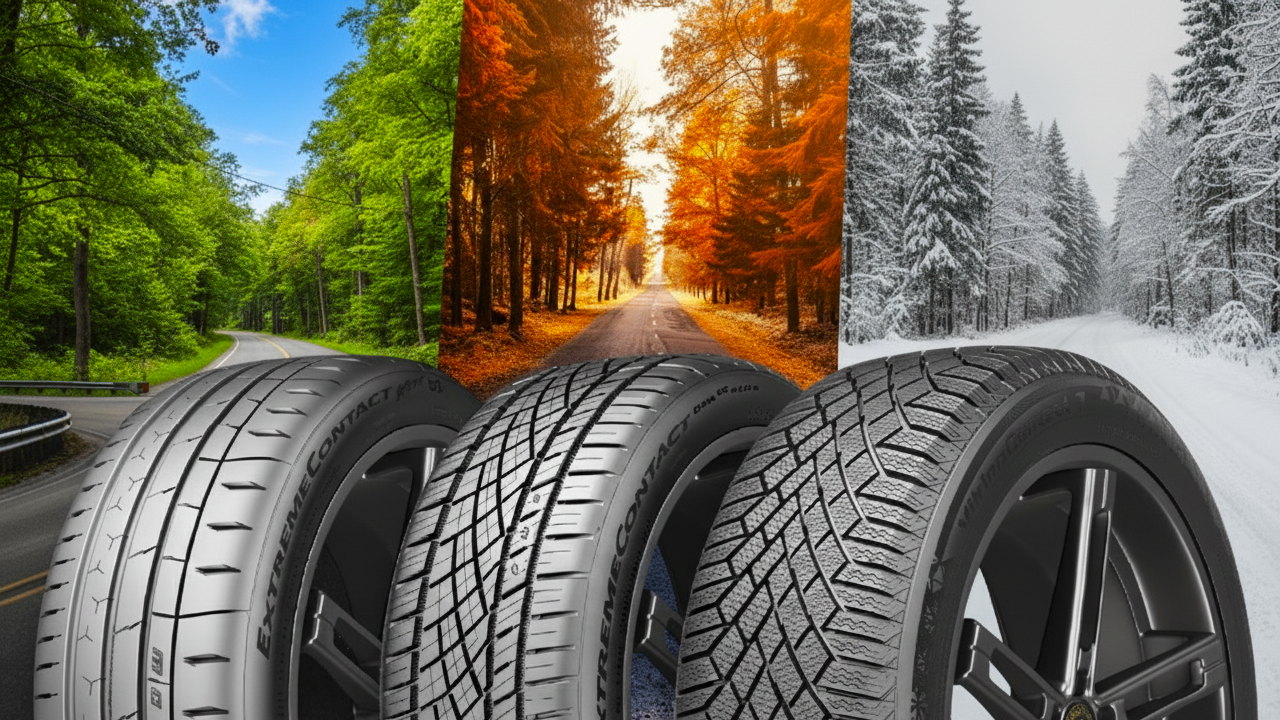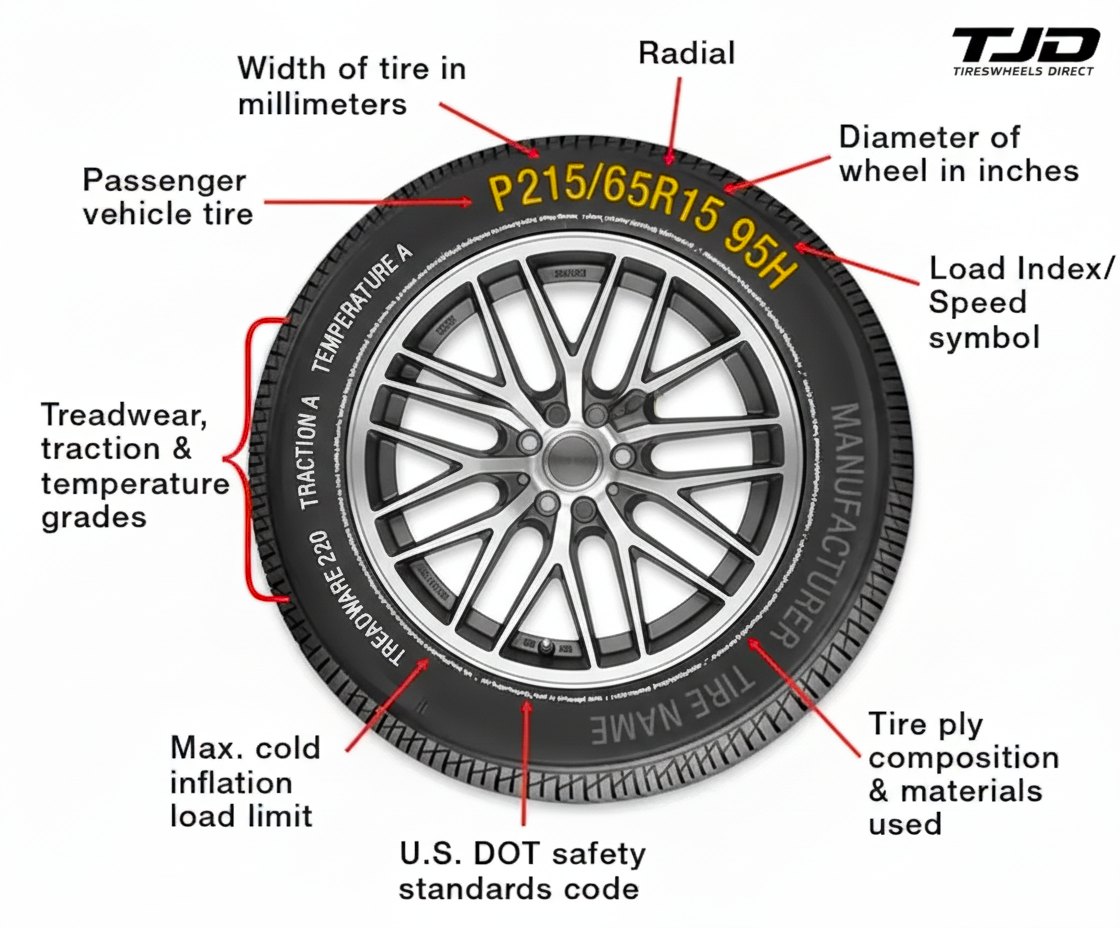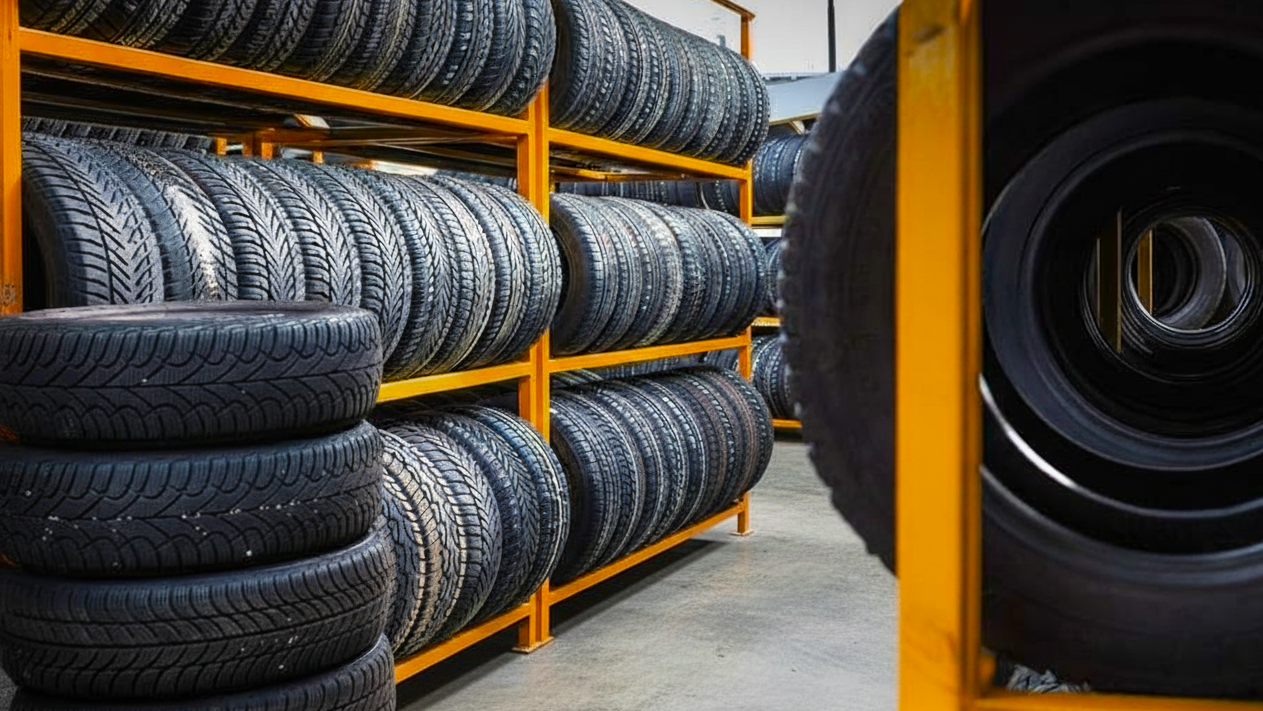How to Choose Tires: Complete Guide to Selecting the Right Tire for Your Car

You trust your brakes. You rely on your car's stability control system. But no technology will work if the wrong rubber is between it and the road. Everything that keeps your car on its intended path comes down to four small contact patches. Their total area is smaller than a sheet of A4 paper. In 2025, when even family sedans have the dynamics of sports cars, and downpours can follow scorching heat in a single day, a mistake in choosing tires can be fatal. Therefore, proper tire selector is a vital necessity, not a car owner's whim.
Today, the tire industry is experiencing a technological boom. Forget about a simple "piece of rubber." A modern tire is a complex composite product. Engineers create high–tech rubber compounds, adding silica for confident grip in the rain and natural oils to keep the rubber from hardening in the cold. Computer modeling allows for the design of asymmetric tread patterns with three–dimensional sipes that literally bite into ice, and deep grooves that channel water from the contact patch to prevent hydroplaning.
Moreover, "smart" tires are appearing on the market. Sensors are embedded inside such a tire, transmitting real–time data on pressure and temperature to your smartphone. Technologies like Michelin Track Connect or Pirelli Connesso analyze wear and provide personalized recommendations. To navigate this diversity without preparation is to take a risk. You can easily overpay for unnecessary features or, worse, choose an unsuitable model and jeopardize safety.
This guide will explain how to choose tires consciously, teach you to read the markings, and help you understand how to buy tires that are 100% suitable for your vehicle.
Main Categories of Car Tires
Tires are divided into three main categories depending on the season for which they are intended.
Tire Type | Purpose | Pros | Cons |
Summer | For use at temperatures above +7°C | ✅ Excellent grip on dry and wet pavement ✅ High durability ✅ Low noise level | 🔻 Harden and lose grip in the cold 🔻 Unsuitable for snow and ice |
Winter | For use at temperatures below +7°C | ✅ Effective on snow and ice ✅ Remain flexible in the cold ✅ Short braking distance on cold roads | 🔻 Poor grip and fast wear on warm asphalt 🔻 Increased noise level |
All–Season | For year–round use in regions with mild winters | ✅ Savings on a second set and tire changes ✅ Versatility | 🔻 Inferior to summer tires in summer and winter tires in winter 🔻 Compromise in performance |
There are also specialized tires.
- For electric vehicles. They have low rolling resistance to increase range, a reinforced structure for greater weight, and a special compound to reduce noise.
- For sports cars (UHP – Ultra High Performance). They provide maximum grip at high speeds.
- For off–road vehicles (A/T, M/T). They have an aggressive tread for driving on mud, rocks, and sand.
TOP 15 Best Tires by Category

We have selected 15 models that are leaders in their classes based on the results of independent tests (e.g., Auto Bild, ADAC, Tyre Reviews) in 2024–2025.
Premium Summer:
- Michelin Pilot Sport 4S. The benchmark for handling and grip for powerful sedans and sports cars.
- Pirelli P Zero. The choice of many supercar manufacturers for original equipment.
- Hankook Ventus S1 evo3. An excellent combination of sporty characteristics and comfort at a more affordable price.
Premium Winter:
- Continental WinterContact TS 870. A leader in tests for European winters (wet and cold asphalt, some snow).
- Nokian Hakkapeliitta R5. The best choice for severe Scandinavian winters (heavy snow and ice).
Premium All–Season:
- Bridgestone Turanza QuietTrack. Focuses on maximum acoustic comfort and a smooth ride.
- Goodyear Assurance WeatherReady. Excellent performance on wet and snowy roads.
Mid–range and Budget Segment:
- Toyo Proxes Sport A/S. A good balance of characteristics for all–season use at a reasonable price.
- Yokohama AVID Ascend LX. Durable and economical tires for touring.
- Falken Azenis FK510. One of the best options in the budget UHP tire category.
- General AltiMAX RT45. Reliable and predictable all–season tires from a Continental subsidiary brand.
- Kumho Ecsta PA51. An excellent price–to–performance ratio.
Off–Road:
- Cooper Discoverer AT3 4S. Versatile All–Terrain tires that perform well on both pavement and off–road.
- Nitto NT555 G2. Not exactly off–road, but rather summer UHP tires popular for powerful SUVs and pickups.
- BFGoodrich All–Terrain T/A KO2. A legend in the off–road world. Incredibly durable and capable.
Model | Type | Season | Price (from, per tire) |
Michelin Pilot Sport 4S | UHP | Summer | €200 |
Continental TS 870 | Touring | Winter | €150 |
Goodyear WeatherReady | Touring | All–Season | €160 |
Falken Azenis FK510 | UHP | Summer | €110 |
BFGoodrich A/T KO2 | Off–Road | All–Season | €220 |
Decoding the "Language of Tires": What the Numbers and Letters on the Sidewall Mean

On the sidewall of every tire is a code that looks like a set of mysterious symbols. In fact, it is its detailed "passport." The ability to read this code is a key skill in tire selection that will save you from buying an unsuitable model.
Let's break it down with a real–world example. Imagine you see the marking 225/60 R16 98H. The first part, 225/60 R16, describes the tire's geometry.
- 225 is the tire's width in millimeters. The wider the tire, the larger the contact patch with the road.
- 60 is the profile height, expressed as a percentage of the width. That is, the sidewall height is 60% of 225 mm. Low–profile tires (e.g., 40 or 45) look sportier and provide better handling but make the ride stiffer.
- R stands for radial construction of the cord – this is the standard for all modern passenger car tires.
- 16 is the mounting diameter in inches. It must exactly match the diameter of your wheel rim.
The second part, 98H, is responsible for performance characteristics.
- 98 is the load index. Each number in a special table corresponds to a specific weight in kilograms that one wheel can support. In this case, "98" means 750 kg per tire. It is dangerous to install tires with a load index lower than recommended by the car manufacturer.
- H is the speed rating, which indicates the maximum speed at which the tire maintains its characteristics. "H" corresponds to 210 km/h.
No less important information is hidden in the DOT code. Look for the abbreviation DOT on the sidewall, followed by a set of symbols. We are interested in the last four digits in an oval. They indicate the date of manufacture. For example, the code "3224" means the tire was made in the 32nd week of 2024. This is a critically important parameter because rubber ages over time and loses its elasticity, even if stored in a warehouse. Avoid buying tires that were produced more than 3–4 years ago.
The correct size for your vehicle is always indicated on a sticker in the driver's door jamb or in the owner's manual.
How to Assess Quality and Choose Suitable Tires
- Trust proven brands. Michelin, Continental, Goodyear, Bridgestone, Pirelli, and Nokian are industry leaders who invest billions in research and development.
- Study independent tests. Don't trust advertising. Read tests from reputable publications and organizations that compare tires under the same conditions.
- Read real owner reviews. They will help you understand how noisy a tire is, how it wears, and how it behaves in real life.
- Compare price and lifespan. Sometimes a more expensive tire from a premium brand turns out to be more profitable in the long run due to longer mileage and better fuel economy.
Technological Innovations in the Tire Industry
The tire industry is not standing still. Here is what awaits us in the future:
- Intelligent Tires. Sensors embedded in the tire will transmit data not only on pressure but also on the degree of wear, road conditions, and optimal suspension settings.
- Eco–friendly Materials. The use of recycled plastic bottles, rice husks, and other renewable materials in the rubber compound.
- Airless Tires. The Michelin Uptis technology completely eliminates punctures.
- Self–healing Technologies. Compounds capable of "sealing" small punctures on their own.
Mistakes to Avoid When Buying Tires

- Saving on quality. Never skimp on tires. This is your safety.
- Ignoring seasonality. Driving on summer tires in winter in Cyprus, especially in the Troodos mountains, is deadly dangerous
- Incorrect size selection. Installing tires of the wrong size can lead to poor handling and problems with electronics (ABS, ESP).
- Choosing without considering driving style. If you drive aggressively, do not buy economical "touring" tires – they will not provide the necessary grip.
Conclusions and Recommendations
A proper tire selector is an investment in your safety, comfort, and economy. Remember that for most drivers in Cyprus, the best choice will be a set of quality summer tires and a set of winter tires if you often drive in the mountains in winter. All–season tires are a good compromise for those who live on the coast and rarely encounter temperatures below +7°C.
Before you how to buy tires, always study the latest tests and compare prices from several sellers. Remember that the question of how to choose tires is a decision that requires a thoughtful approach. You can't buy spontaneously. And with the right approach to purchasing wheels, your car will thank you with predictable behavior and safety on the road.


